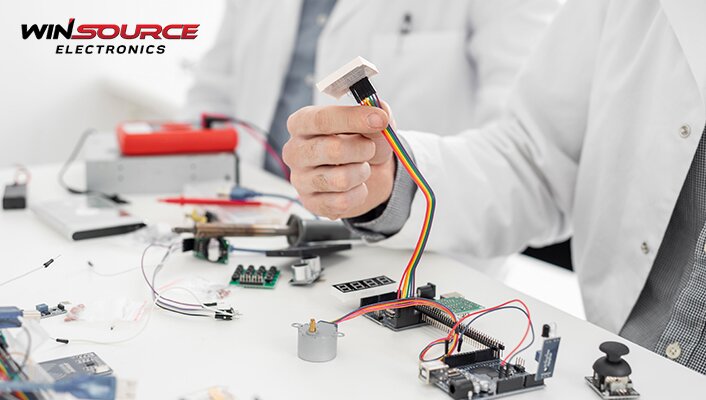
When electronic engineers embark on electronic design and development, selecting the right electronic components is crucial. The correct selection of electronic components can ensure circuit stability, reliability, and performance optimization, while incorrect selection may lead to circuit failure, instability, or poor performance. When selecting electronic components, engineers should follow some important steps and considerations to ensure the selection of components that are best suited to project requirements. Let’s take a look at these steps and considerations together!
Table of Contents
ToggleGain in-depth understanding of circuit requirements
Before selecting electronic components, engineers need to analyze the circuit’s requirements in depth. This means understanding the circuit’s voltage, current, frequency, power, and component specifications such as type, package, size, etc. In addition, if the circuit involves signal processing, power amplification, digital processing, etc., engineers need to have some understanding of different types of devices (such as amplifiers, filters, operational amplifiers, analog-to-digital converters, etc.) to choose the most suitable device.
Evaluate component quality and performance
Engineers need to consider component quality and performance when selecting components. High-quality components have higher reliability and longer service life but are relatively more expensive. For circuits with low performance requirements, more cost-effective components can be chosen. Key parameters for evaluating component performance include gain, bandwidth, distortion, temperature characteristics, etc. In addition, it is necessary to consider parameters such as voltage tolerance, current tolerance, static current, etc., to ensure that components do not overload or burn out.
Consider component reliability and supply
The unstable supply of electronic components is a common problem, especially for some newer or less in-demand components. To ensure the reliability of component supply, engineers can choose more popular component brands or use more common component specifications as much as possible. In addition, engineers need to consider the quality and source of components, especially when purchasing used components or buying components from unknown sources, to guard against counterfeit and inferior products.
Use simulation tools for modeling and testing
Before selecting electronic components, engineers can use simulation tools to simulate and test circuits to validate the suitability of selected components. During the simulation process, engineers can optimize circuit performance and choose the most suitable components by modifying circuit parameters, replacing components, and other methods. Commonly used simulation tools include Multisim, LTSpice, PSpice, and other sophisticated software programs that allow for detailed analysis and evaluation of circuit performance. By using these tools, engineers can make more informed decisions about which electronic components to choose for their projects.
Choose suitable suppliers
When selecting suppliers of electronic components, engineers need to consider factors such as the supplier’s reputation, service quality, and product prices. Generally speaking, larger electronic component suppliers typically have a wider product line and higher reputation, while smaller suppliers may have cheaper prices but also higher risks. Engineers can compare different suppliers based on prices, delivery times, quality assurance, and other conditions to choose the most suitable supplier.
Pay attention to the environmental and safety aspects of components
When selecting electronic components, engineers also need to pay attention to the environmental and safety aspects of the components. Some components may contain harmful substances or produce electromagnetic radiation, which can have adverse effects, while other components may be more environmentally friendly and safe. Engineers can focus on component certification and compliance with environmental and safety standards when selecting components to ensure that the circuit does not have adverse effects on the environment and human health.
As a general rule, selecting the right electronic components is crucial for electronics engineers, requiring them to consider various factors such as understanding circuit requirements, evaluating component quality and performance, considering component reliability and supply, using simulation tools for simulation and testing, selecting appropriate suppliers, and paying attention to the environmental and safety aspects of components. In practice, engineers need to have some understanding of different types of electronic components to effectively compare and choose components. Additionally, using electronic simulation tools and conducting actual testing can help engineers evaluate component performance and choose the most suitable electronic components. When selecting component suppliers, a thorough investigation and comparison are necessary to choose reliable suppliers. Finally, paying attention to the environmental and safety aspects of components is also an important factor that engineers need to consider when selecting electronic components.

COMMENTS